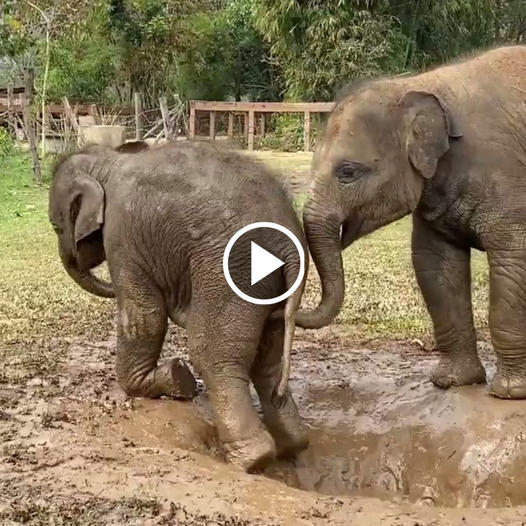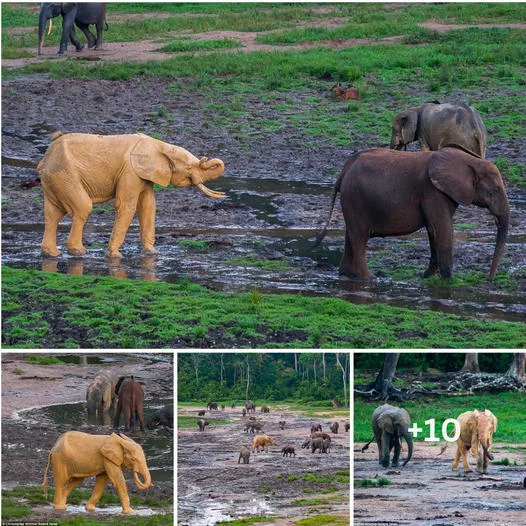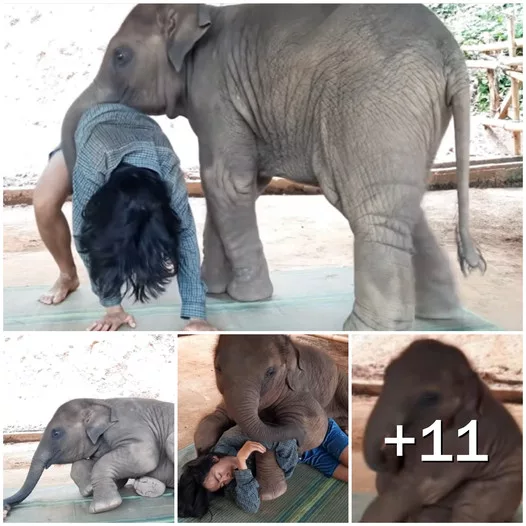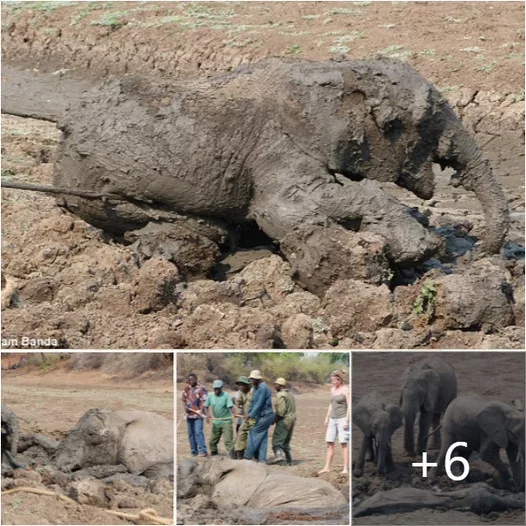Elephants, with their remarkable size, intelligence, and social complexity, have always been subjects of fascination for researchers and wildlife enthusiasts. While many aspects of these magnificent creatures have been extensively studied, there are certain unique and unusual features that remain relatively unexplored. One such area of intrigue is the breasts of female elephants, a topic that unveils both the biological and behavioral aspects of these gentle giants.

Elephants belong to the order Proboscidea, a group of animals that includes their distant relatives, the woolly mammoths and mastodons. One of the defining characteristics of mammals is the presence of mammary glands, which produce milk to nourish their young. Elephants, like all mammals, possess mammary glands, but their anatomy is especially intriguing.

Location: Elephant breasts, also known as mammary glands, are located in the pectoral region of their bodies, on their chest. This placement is unlike most other mammals, where mammary glands are typically located within the abdomen.
Female elephants usually have two mammary glands, just like most mammals. However, the arrangement and positioning of these glands on their chest create a distinctive appearance.
Elephant mammary glands are large and tubular in shape. They can vary in size among individuals but are generally proportional to the overall body size of the elephant. These large glands play a crucial role in nourishing elephant calves during their extended period of dependence on their mothers.
Elephant calves, after birth, rely entirely on their mother’s milk for sustenance and growth. The milk produced by elephant mammary glands is rich in nutrients, essential for the development of strong and healthy calves.

Beyond their unique physical characteristics, elephant mammary glands hold behavioral significance. The act of nursing and the bond between a mother elephant and her calf are profoundly important in elephant society. Calves often seek comfort and reassurance from their mothers during times of stress or danger by suckling at the breast.
Observing the unusual and unique features of female elephant breasts provides valuable insights into the remarkable world of these gentle giants. While these features may be rarely discussed, they are essential elements of the intricate tapestry of elephant biology and behavior. Through further research and exploration, we can continue to unravel the mysteries of these magnificent creatures and gain a deeper appreciation for the diversity of life in the animal kingdom.
Related Posts

“Playful Baby Elephants: Capturing Moments of Pure Innocent Joy”

“A Glittering Marvel: A Dazzling Elephant Shines Like Gold in the Wilderness”

“Sweet Video: Adorable Baby Elephant Demands Tender Care During Naptime”

“Rescued from the Muck: Mother and Baby Elephant Successfully Freed from Muddy Quicksand”
“In the Heart of Savannah, Africa: A Fascinating Tale of Maternal Love Among Elephants”
The vast savannahs of Africa are home to some of the most awe-inspiring creatures on Earth, andaong them, elephants stand out not only for their size and strength but also for their complex social structures and profound displays of emotion. In the heart of this untamed wilderness, a captivating story unfolds—one that revolves around the profound maternal love exhibited by these majestic creatures.

Africa’s Savannahs are a natural wonderland, teeming with life. The iconic baobab trees stretch toward the sky, and the landscape is punctuated by various species of wildlife. Among these inhabitants, the African elephant, often referred to as the gentle giant, reigns supreme. These intelligent and social beings have been an integral part of the African ecosystem for millennia.

The matriarchal structure of elephant herds places mothers at the heart of the family unit. Female elephants, known as cows, are incredibly devoted mothers. They invest years in the upbringing of their offspring, nurturing and protecting them from birth until they reach adulthood. The bond between mother and calf is one of the most enduring and heartwarming aspects of elephant society.

For female elephants, motherhood is a lifelong commitment. They endure a gestation period of nearly 22 months—the longest of any land mammal. Once the calf is born, it relies entirely on its mother for nourishment, protection, and guidance. Mothers teach their young ones essential survival skills, from foraging for food to navigating the complex social dynamics of the herd.

Elephant mothers will stop at nothing to protect their young, even at the cost of their own safety. They form a formidable barrier around their calves when danger approaches, displaying remarkable courage and resilience. These selfless acts of protection underscore the depths of a mother’s love within the elephant kingdom.

As elephant calves grow and mature, they continue to learn from their mothers, observing and emulating their behavior. The wisdom and knowledge passed down through generations of elephant mothers ensure the survival and success of the entire herd.

The story of maternal love among elephants in the African Savannah is a timeless and enduring narrative. It serves as a poignant reminder of the profound connections that exist within the natural world. As these magnificent creatures roam the savannah, they exemplify the beauty of motherhood and the unwavering bonds that tie families together in the wild.

In the heart of Africa’s Savannah, the tale of maternal love among elephants unfolds with grace and grandeur. It is a story that captures the essence of the animal kingdom’s most enduring and heartwarming relationships—the bond between a mother and her child. As we witness the remarkable journey of elephant mothers and their calves, we gain a deeper appreciation for the wonders of the natural world and the enduring power of love.


